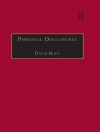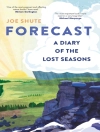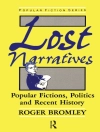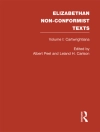Arthurian Literature has established its position as the home for a great diversity of new research into Arthurian matters. It delivers fascinating material across genres, periods, and theoretical issues. TIMES LITERARY SUPPLEMENT
The essays collected here put considerable emphasis on Arthurian narratives in material culture and historical context, as well as on purely literary analysis, a reminder of the enormous range of interests in Arthurian narrativesin the Middle Ages, in a number of different contexts.
The volume opens with a study of torture in texts from Chrétien to Malory, and on English law and attitudes in particular. Several contributors discuss the undeservedly neglected Stanzaic
Morte Arthur, a key source for Malory. His
Morte Darthur is the focus of several essays, respectively on the sources of the ‘Tale of Sir Gareth’; battle scenes and the importance of chivalric kingship; Cicero’s
De amicitia and the mixed blessings and dangers of fellowship; and comparison of concluding formulae in the Winchester Manuscript and Caxton’s edition. Seven tantalizing fragments of needlework, all depicting Tristan, are discussed in terms of the heraldic devices they include. The volume ends with an update on newly discovered manuscripts of Geoffrey of Monmouth’s seminal
Historia regum Britanniae, the twelfth-century best-seller which launched Arthur’s literary career.
Elizabeth Archibald is Professor of English Studies at Durham University, and Principal of St Cuthbert’s Society; David F. Johnson is Professor of English at Florida State University, Tallahassee.
Contibutors: David Eugene Clark, Marco Nievergelt, Ralph Norris, Sarah Randles, Lisa Robeson, Richard Sévère, Jaakko Tahkokallio, Larissa Tracy
Tabla de materias
Wounded Bodies: Kingship, National Identity, and Illegitimate Torture in the English Arthurian Tradition – Larissa Tracy
The Place of Emotion: Space, Silence and Interiority in the Stanzaic
Morte Arthur – Marco Nievergelt
Another Source for Malory’s ‘Tale of Sir Gareth’ – Ralph Norris
‘Warre and Worshyppe’: Depictions of Battle in Malory’s
Le Morte Darthur – Lisa Robeson
Malory’s ‘Chivalric Cliques’: Public and Private
Felyshyp in the Arthurian Community – Richard Sévère
Scribal Modifications to Concluding Formulae in the Winchester Manuscript – David Eugene Clark
Heraldic Imagery in the Embroidered Tristan Narratives – Sarah Randles
Update to the List of Manuscripts of Geoffrey of Monmouth’s
Historia Regum Britanniae – Jaakko Tahkokallio
Sobre el autor
Larissa Tracy is Professor of Medieval Literature at Longwood University. She has published extensively on medieval violence and its intersections with literature, law, medicine, and social identity.












